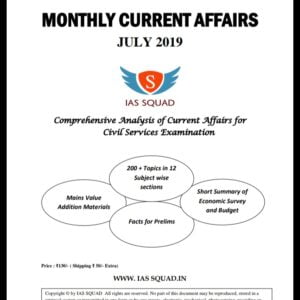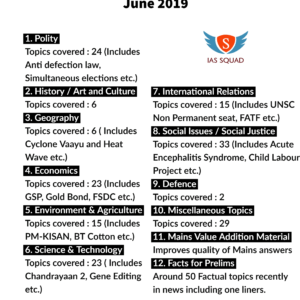PIB Analysis for UPSC CSE
Topics Covered
- Interpol
- Facts for Prelims : Longest Electrified Railway Tunnel, Gallery of Confiscated and Retrieved Antiquities
Background
- Today’s crimes are increasingly international. It is crucial that there is coordination among all the different players in maintaining a global security architecture.
- INTERPOL as a global organization provides the platform for cooperation; they enable police to work directly with their counterparts, even between countries which do not have diplomatic relations.
About Interpol
- International Criminal Police Organization is an inter-governmental organization. Currently there are 194 member countries, and interpol help police in all of them to work together to make the world a safer place.
- To do this, they enable them to share and access data on crimes and criminals, and offer a range of technical and operational support.
- The General Secretariat coordinates day-to-day activities to fight a range of crimes. Run by the Secretary General, it is staffed by both police and civilians and comprises a headquarters in Lyon, a global complex for innovation in Singapore and several satellite offices in different regions.
- In each country, an INTERPOL National Central Bureau (NCB) provides the central point of contact for the General Secretariat and other NCBs.
- In India CBI is the central Point of Contact
Functions
- The General Secretariat provides a range of expertise and services to member countries. Interpol manages 17 police databases with information on crimes and criminals (from names and fingerprints to stolen passports), accessible in real-time to countries.
- Offer investigative support such as forensics, analysis, and assistance in locating fugitives around the world. Training is an important part of the function so that officials know how to work efficiently with our services.
- Expertise supports national efforts in combating crimes across three global areas; terrorism, cybercrime and organized crime.
- Officials working in each specialized crime area run a variety of different activities alongside member countries. This can be investigative support, field operations, training and networking.
- Research and development in international crime and trends.

Interpol Notices
- INTERPOL Notices are international requests for cooperation or alerts allowing police in member countries to share critical crime-related information.
- Notices are published by the General Secretariat at the request of a National Central Bureau and are made available to all our member countries. Notices can also be used by the United Nations, International Criminal Tribunals and the International Criminal Court to seek persons wanted for committing crimes within their jurisdiction, notably genocide, war crimes, and crimes against humanity.
- Most Notices are for police use only and are not made available to the public. However, in some cases, for example to alert the public, or to request help from the public, an extract of the Notice can be published on the website. United Nations Special Notices are public.
Different Notices
- Red Notice: To seek the location and arrest of wanted persons wanted for prosecution or to serve a sentence.
- Yellow Notice: To help locate missing persons, often minors, or to help identify persons who are unable to identify themselves.
- Blue Notice: To collect additional information about a person’s identity, location or activities in relation to a crime.
- Black Notice: To seek information on unidentified bodies.
- Green Notice: To provide warning about a person’s criminal activities, where the person is considered to be a possible threat to public safety.
- Orange Notice: To warn of an event, a person, an object or a process representing a serious and imminent threat to public safety.
- Purple Notice: To seek or provide information on modus operandi, objects, devices and concealment methods used by criminals.
- INTERPOL–United Nations Security Council Special Notice: Issued for groups and individuals who are the targets of UN Security Council Sanctions Committees.
About Red Notice
- A Red Notice is a request to law enforcement worldwide to locate and provisionally arrest a person pending extradition, surrender, or similar legal action.
- It contains two main types of information:
- Information to identify the wanted person, such as their name, date of birth, nationality, hair and eye colour, photographs and fingerprints if available.
- Information related to the crime they are wanted for, which can typically be murder, rape, child abuse or armed robbery.
- Red Notices are issued for fugitives wanted either for prosecution or to serve a sentence. This follows judicial proceedings in the country issuing the request. This is not always the home country of the individual, but the country where the crime was committed.
- When a person is sought for prosecution, they have not been convicted and should be considered innocent until proven guilty. A person sought to serve a sentence means they have been found guilty by a court in the issuing country.
- Red Notices are published by INTERPOL at the request of a member country, and must comply with INTERPOL’s Constitution and Rules.
- A Red Notice is not an international arrest warrant.
2 . Facts for Prelims
Gallery of Confiscated and Retrieved Antiquities
- The Minister of State for Culture & Tourism (Independent charge) inaugurated ‘Gallery of Confiscated and Retrieved Antiquities’ at Purana Qila in New Delhi
- The ‘Gallery of Confiscated and Retrieved Antiquities’ showcases a part display of 198 confiscated and retrieved antiquities belonging from ancient to modern period from the Central Antiquity collection. The exhibition also sensitizes the visitors about the illegal trade of precious heritage items and process and regulations for retrieving them.
- Gallery displays two parallel narratives which will provide a holistic understanding of the importance of repatriation of smuggled antiquities.
- One of the narratives establishes the larger context of the museum display including the importance of cultural heritage; laws governing our heritage; theft and trafficking of cultural items and the process of retrieval of smuggled antiquities
- The other narrative will focus on the intrinsic aesthetic qualities and iconography of the artifacts.
- The wide range of retrieved or confiscated antiquities includes stone and metal sculptures, coins, paintings, ivory and copper artifacts, architectural panels, etc.
- Some of the exclusive exhibits showcased in the gallery are Bronze sculptures of Parvati and Sridevi of Chola Period (brought back in 2016), Standing Buddha (returned by the Metropolitan Museum of Art in the year 1999), terracotta Mother Goddess of Mauryan period (brought back in the year 2016), Brahma-Brahmani (confiscated by Central Bureau of Investigation), Mithuna (seized in New York and brought back in the year 2010) and Kashmiri Harwan tile (returned to India by Consulate General of India, New York in the year 2016).
Longest Electrified Railway Tunnel
- India’s longest electrified tunnel is between Cherlopalli and Rapuru railway stations in Andhra Pradesh

